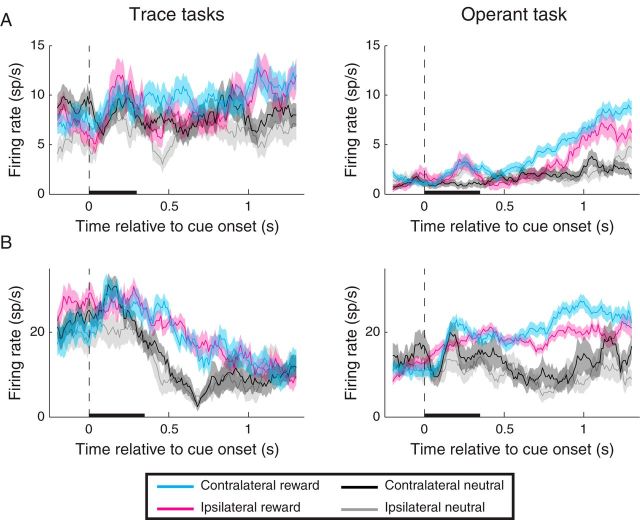Figure 5.
Firing rate of individual neurons recorded during the (space-irrelevant) trace-conditioning task (left) and operant task (right). In each case, instances of significant (p < 0.05) spatial selectivity were observed only during the operant task. A, Individual neuron that was spatially selective during the early and late delay epochs for the operant task. Reward selectivity was apparent during the early/late delay for the operant task and during all epochs for the trace-conditioning tasks. B, Individual neuron that was spatially selective during all epochs of the operant task, but not in any epoch for the trace-conditioning tasks. Reward selectivity was significant in all epochs of both tasks. The different baseline firing rates observed during the two tasks could have been related to the different overall reward rate of the two tasks, consistent with the proposal that amygdala neurons encode state value (Belova et al., 2008). Black bars represent the duration of the cue. Shading indicates the standard error of firing rates across trials.

